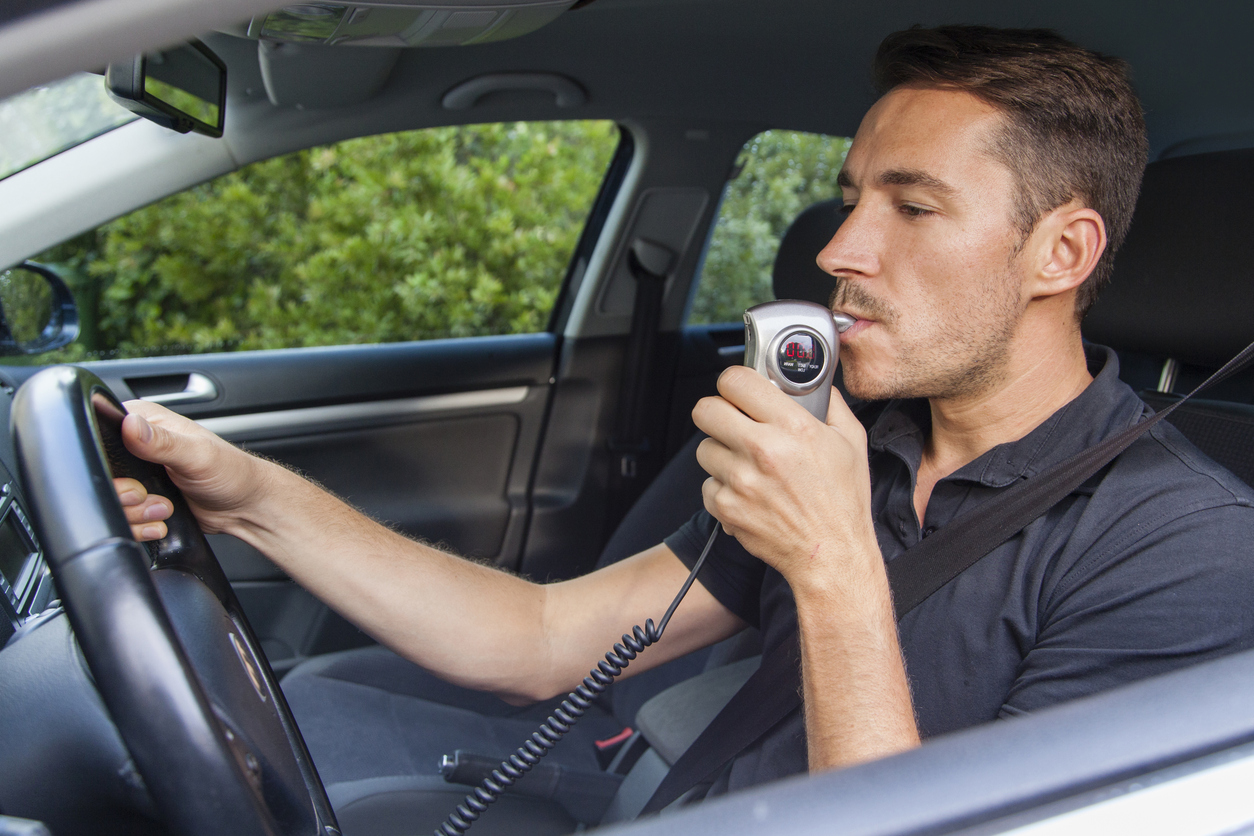Hi-tech Road Blocks to Impaired Driving: Existing and Emerging Technology

Separating alcohol and drugs from driving is the best way to prevent impaired driving. However, technology may also offer some assistance in keeping our roads safer. However, emerging technology may have even more to offer.
Personal breathalyzers are a type of technology that have long been available to the public. While they have become more widely available in recent years, the quality and accuracy of these devices can vary widely.
According to Mother’s Against Drunk Driving Canada (MADD), personal breathalyzers have great value in helping people identify risky levels of impairment so they can adapt their behaviour and prevent impaired riving. However, MADD points out that the value of these devices depends on whether they are used correctly and also on the quality of the devices being used.[1] User errors, such as using a breathalyzer too soon after drinking or using a breathalyzer with a low battery, can produce inaccurate readings. Another risk of relying on a personal breathalyzer is that the readings do not account for other factors that impair driving. Factors like fatigue, use of other drugs, and difficulty seeing at night can all impair a person’s ability to drive.
More advanced technology is on the horizon. One intriguing example is Nissan’s concept-car that incorporates several passive impaired driving prevention features.[2] The features include a sensor built into the transmission shift knob that detects alcohol in perspiration from the driver’s palm as they attempt to start driving. Other features include a camera facing the driver that monitors the driver’s face for signs of decreased consciousness as well as a system monitoring the driver’s behaviour on the road for signs of inattentiveness.
The effectiveness of passive impaired driving prevention technology in keeping roads safer remains to be seen. But, the United States government is heading in a direction that places heavy reliance on such technology. On November 15, 2021, Joe Biden signed Infrastructure Investment and Jobs Act into law. This new act requires that all new vehicles be equipped with passive impaired driving safety equipment by roughly 2026.[3]
The National Highway Traffic Safety Administration (“NHTSA”) will spend the next few years determining what impaired driving safety equipment will become mandatory in the United States.[4]
An important consideration for the NHTSA is whether data from any mandatory cameras will be stored and to what extent. In the litigation context, opposing parties and police investigators already use black box data from vehicles to investigate motor vehicle collisions. If data from mandatory cameras is stored then such data may also become available to opposing parties and police investigators. While this offers the potential to expedite investigations, the data from a camera pointed at a driver’s face has the potential to be highly intrusive and may raise a host of privacy concerns.
Emerging passive impaired driving prevention technology seems to have a lot of offer in keeping roads safer. However, some key questions remain to be answered including the extent to which it will be required, how privacy concerns will be addressed, and how much drivers can rely on this technology to ensure they are fit to drive.
[1] MADD Canada, “MADD Canada Supports Availability of Personal Breathalyzers As Educational Tool” (12/05/2016), online: MADD Canada <madd.ca/pages/madd-canada-supports-availability-of-personal-breathalyzers-as-educational-tool/>.
[2] Nissan Motor Corporation, “Drunk-driving Prevention Concept Car” (accessed 11/11/2021), online: Nissan Motor Corporation <www.nissan-global.com/EN/TECHNOLOGY/OVERVIEW/dpcc.html>.
[3] US, Bill H.R. 3684, Infrastructure Investment and Jobs Act, 117th Congress, 2020-2021, s 24220 (enacted).
[4] MADD Media, “MADD Hails Monumental Drunk Driving Prevention Provision in Infrastructure Bill Passed by U.S. House of Representatives” (11/06/2021), online: Mothers Against Drunk Driving <www.madd.org/press-release/madd-hails-monumental-drunk-driving-prevention-provision-in-infrastructure-bill-passed-by-u-s-house-of-representatives>.
[5] An American public policy research organization.
[6] Julian Sanchez, “Infrastructure Bill Requires Cars to Detect “Impaired” Drivers” (09/22/2021), online: CATO Institute <www.cato.org/blog/infrastructure-bill-requires-cars-detect-impaired-drivers>.
Written By

Rayanna is devoted to advocating for clients so they can focus on rebuilding their lives. She has seen firsthand the profound impact an injury can have on a victim and their families and believes that navigating a complex legal system should be the least of their worries. Effective communication, compassion and commitment is the cornerstone of Rayanna’s practice.
